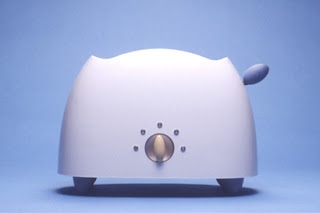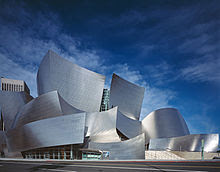Classical, Modern, Deconstruction and Toasted
Written by Spencer McNeil on October 15th, 2012 // Filed under Uncategorized
While the ongoing debate on what constitutes good design will ensue until the day humans no longer play a part of it, I’d like to state a premise: taste and good design are not mutually exclusive. There is some really good design I don’t care for, but that doesn’t take away from it’s merit. I’ll use architect Michael Graves‘ household artifacts for Target as an example. They are well designed; just not for me. He’s also an excellent architect, whose work I admire, but mostly don’t like.

Michael Graves Toaster for Target
Ancient roman architect, engineer and writer Vitruvius, in his treatise “The Ten Books of Architecture” explains a structure must exhibit the three qualities of firmitas, utilitas, venustas-meaning it must be solid, useful, beautiful. According to Vitruvius, architecture imitates nature. Humans create their shelter using natural materials. The Greeks perfected the art of building and in doing so invented the architectural orders: Doric, Ionic and Corinthian, upon which all buildings are proportioned. The Vitruvian Man, as later drawn by Leonardo da Vinci, embodies the fundamental geometric patterns of the universe, the square within the circle. Currently, the Design Quality Indicator, a system started in England used to rate buildings, is rooted in Vitruvian principles.

Vitruvian Man by Leonardo da Vinci
Fast forward to the Industrial Revolution and the accompanying breakthroughs in manufacturing, transportation and building technology, resulting in an apparent break with tradition in the form of what is commonly referred to as the Modern Movement in Architecture. Twentieth century architect, Le Corbusier, in his manifesto, “Towards An Architecture,” defined a fundamental shift in how we would interact with buildings, arising from a new architecture based on function and an aesthetic based on pure form. Over a hundred years later, part of our daily bread, these ideas aren’t radical anymore. In fact, there is a lot of in common between Le Corbusier and Vitruvius.

Villa Savoie by Le Corbusier
The digital age has made the unthinkable constructible. Enter Frank Gehry, whose work defies modernism, structure, our notions of space and redefine what is good, to say the least of what we like. At first, I thought of his work as junkyards, but am now a convert to his deconstructed buildings.

Gehry and Partners’ Disney Concert Hall
Vitruvius substantiated and inspired architects during the Renaissance. Le Corbusier said he applied the same principles to everything he designed as does Michael Graves. Frank Gehry’s work has redefined the profession. These are masters of Design. Their work sets the bar for good design.
I don’t think Target will be asking Gehry to design a titanium toaster, but maybe Lady Gaga needs some new wardrobe ideas.
